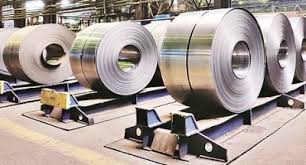NEW DELHI: India’s steel industry is seeking a ban on exports of iron ore and has petitioned the Prime Minister’s Office (PMO) in this regard. Government data show that from April to August this year, India’s iron ore production came down by 36 per cent whereas its exports surprisingly went up by 80 per cent during the same period.
Even Odisha’s iron ore production came down by 49 per cent whereas exports of iron ore from Odisha ironically went up by 118 per cent from April to August. Sources said the survival of the steel industry depends more on domestic iron ore when the country is going through a pandemic. In the midst of the Covid-19 pandemic, India surprisingly witnessed a huge jump in iron ore exports to China between April and September.
Apart from large, primary steel producers, it is the small, secondary steel players which will collapse and witness huge losses if such steep rise in iron ore exports are not stopped immediately.
Secondary steel units contribute 50 per cent of steel production in India. Apart from steel, sponge iron production is roughly 31 million tonnes while the pellet plant capacity is approximately 85 million tonnes.
India’s iron ore production in April-September at 47 million tonnes has witnessed a sharp de-growth of 50 per cent over the same period last year. This has been mainly on account of the change in hands of the expired iron ore mines, numerous evacuation issues and delays in clearances. During the same period, exports have witnessed a sharp rise of 63 per cent at 22 million tonnes, much to the dismay of the captive miners.
In the last financial year, India’s iron ore exports rose to 37.69 million tonnes from 16.15 million tonnes in 2018-19, a jump of almost 133 per cent. Owing to the strong demand from China, India exported nearly 30.86 million tonnes of iron ore, or 82 per cent of the total exports, to China alone.
Though India mainly exports lower grade iron ore, with up to 58 per cent iron content, having nil export duty to countries such as China, Japan and South Korea, there has always been a fierce debate that a major chunk of this below 58 per cent Fe iron consists of a blend of greater than 58 per cent Fe iron, causing a huge unchecked dent to the exchequer.
Export of over 58 per cent iron content attracts 30 per cent export duty and is, thus, widely used by the domestic industry. However, the present condition is quite different as the industry is battling an acute iron ore shortage. India had already started stepping up its iron ore exports since last year to bridge the global supply gap, as flows from the world’s two biggest producers — Brazil and Australia — were on a decline.
Odisha, the country’s largest iron ore producing state at 135 million tonnes, and the state with all the major steel units with approximately 34 million tonnes of crude steel capacity, is facing a steep cut in steel capacity utilisation which is likely to further aggravate in the months to come if robust measures are not put in place and raw material concerns are not addressed.
The All India Induction Furnaces Association wrote to the PMO and called for banning iron ore exports for the survival of the secondary steel producers. It added that this is required to prevent huge job losses in the steel sector.
The Association said that iron ore should be converted into steel within the country and then the finished steel products should be exported. Rajeev Singh, Director General, Indian Chamber of Commerce, also wrote to the PMO seeking discouragement of exports of iron ore and making it available for the domestic steel industry.







